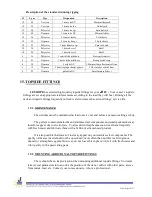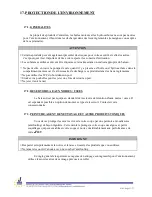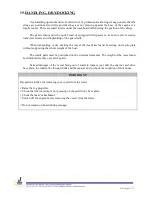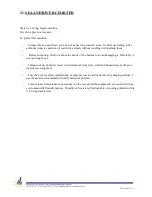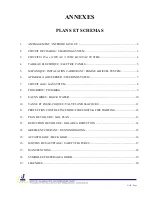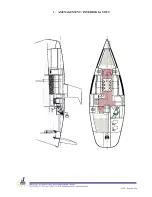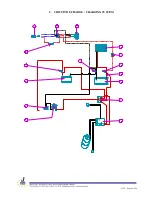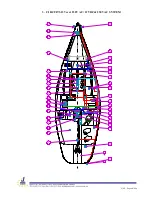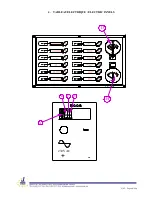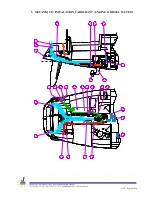
J-109– Page 28/37
14.
SAILS AND RIGGING
Regularly check the standing and running rigging, at least once a year.
For metal cables:
-
ROD standing rigging must be checked by a professional engineer at least every year
-
Check for corrosion, particularly on the connection with the turnbuckles.
-
Check the end pieces and turnbuckles are in good condition.
For the synthetic cables (Kevlar, Twaron, etc) for the runners and tackles, the halyards, the
sheets, mooring ropes, etc., change them as soon as any signs of fraying or wear appear, and at least
every 24 months.
Regularly check the other elements of the rigging, the sheets, the mooring ropes, etc. and
replace them if worn
14.1.
MAST – STANDING RIGGING
The mast is an essential element of your boat so it is well dimensioned and strongly
supported. However, your mast must be correctly adjusted and its condition regularly checked,
as well as that of the standing rigging. On your
J
109
,
the mast is made from aluminium in
standard and carbon (in option) and the standing rigging is made of discontinuous ROD. The
backstay is equipped with a hydraulic cylinder. Carefully follow the mast manufacturer’s
instructions for adjusting and maintaining the masting.
14.2.
GENOA/JIB FURLER
Your
J
109 is fitted with a Harken furler system, which has been chosen for its ease of
use, its sturdiness and the quality of service the manufacturer provides. Regularly check the
condition of the drum and the tubes. Follow the manufacturer’s instructions.
14.3.
THE SAILS
The sails are your vessel’s engine. Take care of them and they will provide their full
performance. Follow the advice for setting and maintaining your vessel.
14.3.1.
Distributing the sails
The table below provides some idea of the sail area to adopt according to the wind.
However, you must also take into account elements other than the wind:
•
The sea conditions.
•
The crew’s comfort and capabilities.
•
Entering or leaving a port, the nearness of any danger
•
Encountering a squall or fog.
Summary of Contents for J/109
Page 39: ...J 109 Page A2 A28 1 AMENAGEMENT INTERIOR LAYOUT...
Page 45: ...J 109 Page A8 A28 7 CIRCUIT GAZ GAS SYSTEM 1 2 3 4 5 4 6 7...
Page 48: ...J 109 Page A11 A28 10 VANNE ET PASSE COQUES VALVES AND SEACOCKS 1 2 3 4 5 6 7 8 9...
Page 49: ...J 109 Page A12 A28 11 PROTECTION CONTRE L INCENDIE FIRE EXISTS FIRE FIGHTING 1 2 3 4 5 6 7...
Page 50: ...J 109 Page A13 A28 12 PLAN DE VOILURE SAIL PLAN 1 E J P I 2 3 4 5 6...
Page 51: ...J 109 Page A14 A28 13 REDUCTION DE VOILURE SAIL AREA REDUCTION 1 2 3 4 5...

















